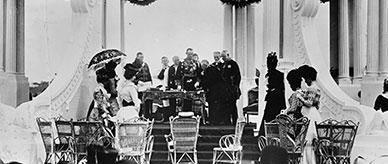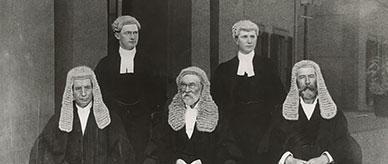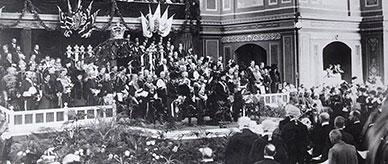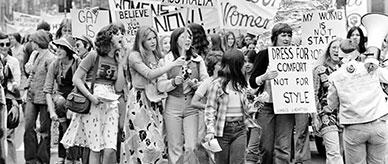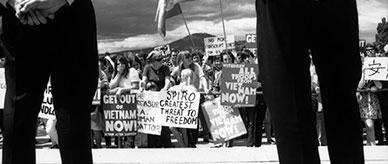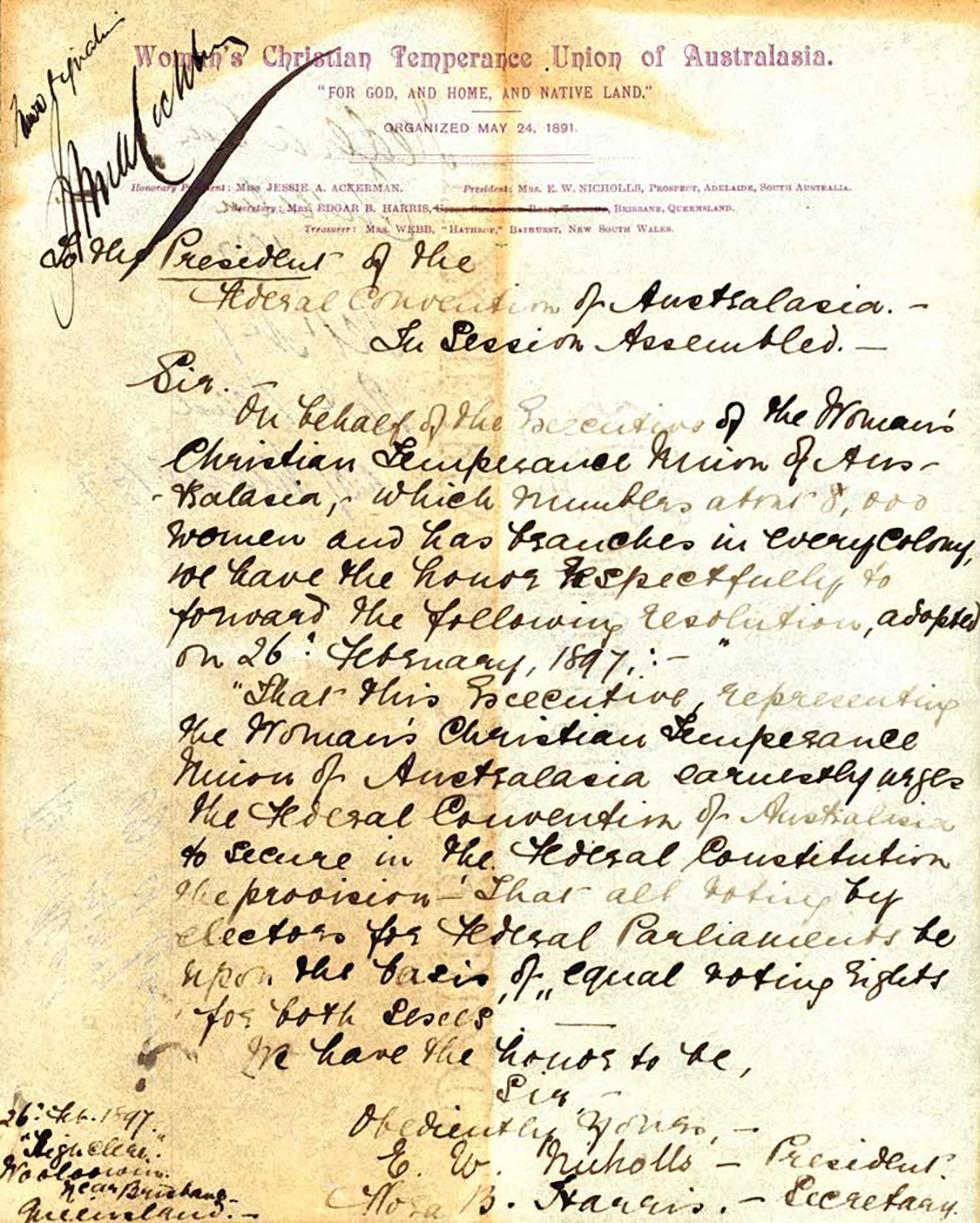


About this record
This is a one-page handwritten petition from the executive of the Women's Christian Temperance Union (WCTU) of Australasia to the president of the first session of the Australasian Federal Convention of 1897–98. The petition presents a resolution passed by the Union executive on 26 February 1897, calling for equal voting rights for both sexes to be incorporated in the proposed constitution for an Australian federation. It is signed by the president of the Union, EW Nicholls, and the secretary, Nora B Harris, on behalf of all members.
Educational value
- This petition to the first session of the Federal Convention, held in Adelaide from 22 March to 23 April 1897, called for equal voting rights for both genders to be guaranteed under the constitution for the proposed Commonwealth of Australia. At the time South Australia was the only Australian colony that allowed women to have voting rights, and this became a powerful argument put by the South Australian representatives that women should not be denied voting rights in future federal elections.
- Equal voting rights for women became a pivotal issue at the Convention. The all-male delegates were told South Australia was prepared to withdraw from the federation process if women were not given Commonwealth voting rights. The delegates decided that women who had the vote in the colonies should keep it in the Commonwealth. Consistency would eventually ensure that if women in South Australia could vote in federal elections, this right would be extended to all Australian women.
- The main instigator of this petition was the president of the WCTU, Elizabeth Webb Nicholls (1850–1943), one of two signatories of the document. She joined the organisation in 1886, headed it from 1888 to 1903 and also served as South Australian state president from 1906 until 1927. Nicholls played a prominent role in the campaign that resulted in South Australia becoming the first Australian colony to give non-Indigenous and Indigenous women both the right to vote and to stand for election in 1895.
- The WCTU played a central role in campaigns for women's suffrage because of a belief that their reform agenda for the welfare of women and children could only be achieved through the ballot box. The WCTU was founded in Australia in 1891 based on an organisation in the United States of the same name. They believed that alcohol destroyed the social fabric and advocated prohibition by law or individual teetotalism.
- The Commonwealth Franchise Act of 1902 vindicated this petition and gave all Australian women except Indigenous women the right to vote and stand in federal elections. However, it took until 1908 for the final individual state (Victoria) to grant women the right to vote in state elections. The other states were also slow to follow South Australia's lead in giving women the right to stand as candidates in state elections. Western Australia (1920), Tasmania (1921) and Victoria (1923) were the last.
Acknowledgments
Reproduced by kind permission of the National Woman’s Christian Temperance Union of Australia Ltd
Learning resource text © Education Services Australia Limited and the National Archives of Australia 2010.
Related themes
Need help with your research?
Learn how to interpret primary sources, use our collection and more.

